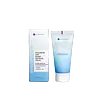What's inside
What's inside
 Key Ingredients
Key Ingredients

 Benefits
Benefits

 Concerns
Concerns

 Ingredients Side-by-side
Ingredients Side-by-side

Niacinamide
SmoothingAdenosine
Skin ConditioningHyaluronic Acid
HumectantDimethicone
EmollientBeeswax
Emulsion StabilisingButyrospermum Parkii Butter
Skin ConditioningCalamine
AbsorbentGlyceryl Stearate
EmollientCetearyl Alcohol
EmollientCeresin
Emulsion StabilisingSorbitan Stearate
EmulsifyingCarbomer
Emulsion StabilisingCentella Asiatica Extract
CleansingSalix Alba Bark Extract
AstringentLactobacillus/Soybean Ferment Extract
Skin ConditioningPortulaca Oleracea Extract
Skin ConditioningOriganum Vulgare Leaf Extract
Skin ConditioningCinnamomum Cassia Bark Extract
MaskingScutellaria Baicalensis Root Extract
AstringentButylene Glycol
HumectantNiacinamide, Adenosine, Hyaluronic Acid, Dimethicone, Beeswax, Butyrospermum Parkii Butter, Calamine, Glyceryl Stearate, Cetearyl Alcohol, Ceresin, Sorbitan Stearate, Carbomer, Centella Asiatica Extract, Salix Alba Bark Extract, Lactobacillus/Soybean Ferment Extract, Portulaca Oleracea Extract, Origanum Vulgare Leaf Extract, Cinnamomum Cassia Bark Extract, Scutellaria Baicalensis Root Extract, Butylene Glycol
Sea Water
HumectantButylene Glycol
HumectantGlycerin
Humectant1,2-Hexanediol
Skin ConditioningWater
Skin ConditioningHydrogenated Didecene
Skin Conditioning2,3-Butanediol
HumectantCaprylic/Capric Triglyceride
MaskingCarbomer
Emulsion StabilisingCetearyl Alcohol
EmollientC14-22 Alcohols
Emulsion StabilisingTromethamine
BufferingHydroxyethyl Acrylate/Sodium Acryloyldimethyl Taurate Copolymer
Emulsion StabilisingC12-20 Alkyl Glucoside
EmulsifyingGlyceryl Acrylate/Acrylic Acid Copolymer
HumectantXanthan Gum
EmulsifyingEthylhexylglycerin
Skin ConditioningPvm/Ma Copolymer
Emulsion StabilisingCitrus Aurantium Bergamia Fruit Oil
MaskingAllantoin
Skin ConditioningDisodium EDTA
Sorbitan Isostearate
EmulsifyingSodium Hyaluronate
HumectantHydrolyzed Hyaluronic Acid
HumectantMelia Azadirachta Leaf Extract
Skin ConditioningMelia Azadirachta Flower Extract
Skin ConditioningCoccinia Indica Fruit Extract
Skin ConditioningHydroxypropyltrimonium Hyaluronate
Solanum Melongena Fruit Extract
Skin ConditioningOcimum Sanctum Leaf Extract
Skin ConditioningCurcuma Longa Root Extract
MaskingCorallina Officinalis Extract
Skin ConditioningSodium Acetylated Hyaluronate
HumectantHyaluronic Acid
HumectantSodium Hyaluronate Crosspolymer
HumectantHydrolyzed Sodium Hyaluronate
Skin ConditioningPotassium Hyaluronate
Skin ConditioningLimonene
PerfumingLinalool
PerfumingSea Water, Butylene Glycol, Glycerin, 1,2-Hexanediol, Water, Hydrogenated Didecene, 2,3-Butanediol, Caprylic/Capric Triglyceride, Carbomer, Cetearyl Alcohol, C14-22 Alcohols, Tromethamine, Hydroxyethyl Acrylate/Sodium Acryloyldimethyl Taurate Copolymer, C12-20 Alkyl Glucoside, Glyceryl Acrylate/Acrylic Acid Copolymer, Xanthan Gum, Ethylhexylglycerin, Pvm/Ma Copolymer, Citrus Aurantium Bergamia Fruit Oil, Allantoin, Disodium EDTA, Sorbitan Isostearate, Sodium Hyaluronate, Hydrolyzed Hyaluronic Acid, Melia Azadirachta Leaf Extract, Melia Azadirachta Flower Extract, Coccinia Indica Fruit Extract, Hydroxypropyltrimonium Hyaluronate, Solanum Melongena Fruit Extract, Ocimum Sanctum Leaf Extract, Curcuma Longa Root Extract, Corallina Officinalis Extract, Sodium Acetylated Hyaluronate, Hyaluronic Acid, Sodium Hyaluronate Crosspolymer, Hydrolyzed Sodium Hyaluronate, Potassium Hyaluronate, Limonene, Linalool
 Reviews
Reviews

Ingredients Explained
These ingredients are found in both products.
Ingredients higher up in an ingredient list are typically present in a larger amount.
Butylene Glycol (or BG) is used within cosmetic products for a few different reasons:
Overall, Butylene Glycol is a safe and well-rounded ingredient that works well with other ingredients.
Though this ingredient works well with most skin types, some people with sensitive skin may experience a reaction such as allergic rashes, closed comedones, or itchiness.
Learn more about Butylene GlycolCarbomer is a polymer of acrylic acid. Its main role is to create a gel consistency.
A high amount of carbomer can cause pilling or balling up of products. Don't worry, most products contain 1% or less of carbomer.
Cetearyl alcohol is a mixture of two fatty alcohols: cetyl alcohol and stearyl alcohol. It is mainly used as an emulsifier. Emulsifiers help prevent the separation of oils and products. Due to its composition, it can also be used to thicken a product or help create foam.
Cetearyl alcohol is an emollient. Emollients help soothe and hydrate the skin by trapping moisture.
Studies show Cetearyl alcohol is non-toxic and non-irritating. The FDA allows products labeled "alcohol-free" to have fatty alcohols.
This ingredient is usually derived from plant oils such as palm, vegetable, or coconut oils. There is debate on whether this ingredient will cause acne.
Due to the fatty acid base, this ingredient may not be Malassezia folliculitis safe.
Learn more about Cetearyl AlcoholHyaluronic acid is naturally found in healthy skin. It is a humectant, meaning it draws moisture to your skin.
This ingredient helps hydrate, soothe, and protect the skin.
What makes hyaluronic acid so hydrating? It has the capacity to bind or hold large amounts of water.
Fun fact: It is already naturally found in our bodies, such as the fluids of our eyes and our joints.
Studies find this ingredient to have anti-inflammatory and anti-microbial properties. This can help speed up wound-healing.
Hyaluronic acid can be irritating if the molecule has a low-molecular weight, or if the molecules are small.
One study found low-molecular weight hyaluronic acid to be pro-inflammatory, meaning some people may experience irritation. This is because our bodies use hyaluronic acid in the wound-healing process to signal to our bodies, via irritation, that something needs healing.
The same study found high-molecular weight hyaluronic acid to be anti-inflammatory.
These are some other common types of Hyaluronic Acid:
Learn more about Hyaluronic Acid